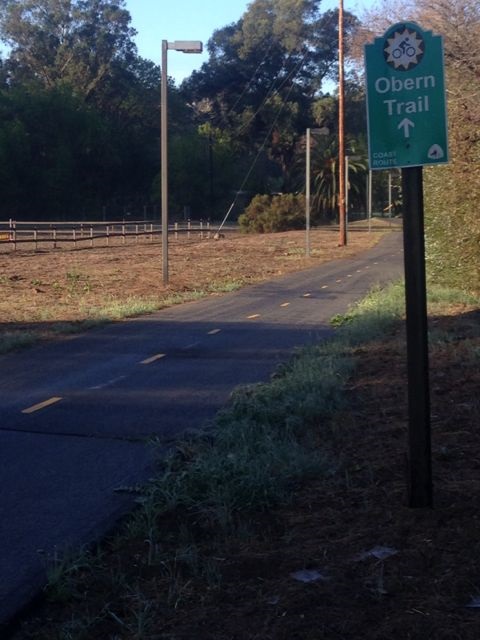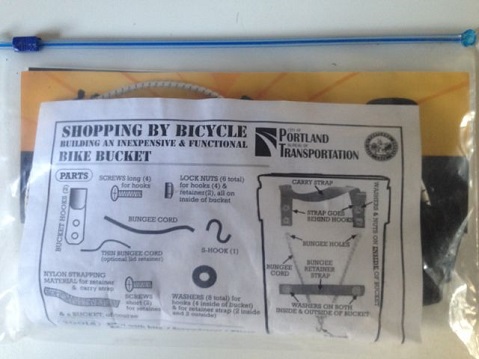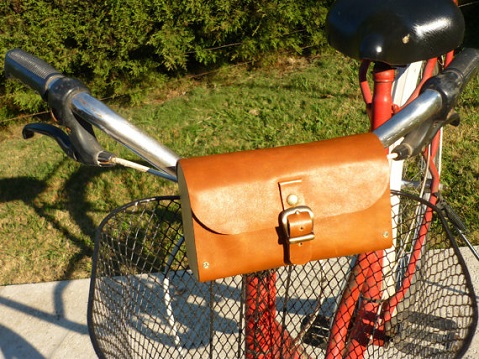Sharing the Path
Bike Path Etiquette and Saddlebag Tips
Bike path etiquette and DIY saddlebags are topics some bike riders have suggested as column topics. I’ve never written about saddlebags or panniers before. Past Pedal On columns have talked about sharing the road but never about bike path dos and don’ts. Here we go with two new subjects for March Madness.
I’ve just put new chainrings on my Lemond road bike, so it seemed like a good idea to test the bike and check out conditons along a bike path before writing this column. Bright and early I ventured down Modoc and rolled onto the Obern Trail for a quick ride up to Goleta Beach. For you History Channel fiends, Vie and George Obern first proposed the creation of the Atascadero Creek Bikeway back in 1967. It was Santa Barbara’s first bikeway and renamed in their honor in 2004.

The Obern is a multi-use path often crowded with bicyclists, joggers, runners, students, farm laborers, skateboarders, and families pushing strollers. It’s also a multi-speed path with cyclists whizzing by at 20+mph and grandparents pushing strollers at less than 2mph. Sharing the bike path can be almost as difficult and complex as sharing the road. On a bike path, cyclists are the equivalent of fast moving cars on a road. As a cyclist, my first advice is simple — slow down. If you ride on a shared recreational path, you will have to deal with people walking, jogging, or stroller pushing. Here are some simple tips:
Be Courteous: This is the Golden Rule. We all learned it. Let’s use it. Treat all trail users with respect and as you would want to be treated regardless of their mode of travel, age, speed, or level of skill. If we do this one, the next eight are easy.
Be Predictable: Ride in a consistent and predictable manner. Always signal when you turn, and look behind before changing lanes on the trail.
Keep Right: Stay as near to the right side of the trail as is safe, except when passing another user.
Pass on the Left: Pass others on their left, and yield to slower oncoming traffic. Look around to make sure the lane is clear before you pull out and pass. Slow down when you pass, and remember that kids and pets can be unpredictable. Give a signal by using voice, bell, or horn before passing. If you are listening to music while riding, use only one earbud so that you can hear others on the trail. It’s nice to say “thanks” as you pass.
Stopping: This is easy — if you have to stop to rest, eat, talk, or fix a flat, move off the trail. Beware of others approaching you from behind, and make sure they know you are pulling over.
Obey All Traffic Signs and Signals: Use extra caution where trails cross streets. If you are riding the Obern Trail, the intersection at Puente Drive can be very tricky — be cautious. Stop at all signs and intersections. When entering or crossing a trail, yield to traffic on the trail.
Use Lights at Night: The Obern has solar-powered streetlights in some areas, but if you are riding at after dark, your bike must be equipped with lights. Ideally, you should be riding with a front light that is bright enough to light the path 500 feet ahead so you can avoid hazards. I used to ride the Obern Trail at night. The sections without streets lights are totally dark, and you will meet up with potholes and road hazards such as an unexpected bunny rabbit or birds flying out of the brush.
Be Respectful of Private Property: Trails such as the Obern are open to the public, but the land on the side of the trail is private property. Please respect all property rights, and clean up any litter or debris that you drop.
Have You Outgrown Trails? Trails have engineering and design limits. If your speed or style endangers other users, check for alternative routes better suited to your needs. If you must ride at a steady nonstop pace of 23.5mph, you may be better off using the bike lane on Modoc and Hollister to get to Goleta.
Here are my final words of advice about riding on bike paths, which are the same as my first. Accept that when you ride on a shared path, people riding bikes, or walking with or without dogs, and people running all have an equal right to be there. I tell myself every time I get on the Obern Trail, if I cannot share; I should not be on the path.
DIY SADDLEBAGS
I’m not a tailor, but I can sew a mean patch on a pair of jeans or a backpack. Here are some cool ideas for DIY saddlebags. The first comes from the City of Portland Bureau of Transportation. If you live in Portland (or have friends there), you can buy a nifty kit for $10, complete with parts and instructions, to make an inexpensive and functional bike basket. All you need to supply is a five-gallon plastic bucket.

The bike bucket is easy to build and works great. It is both utilitarian and high capacity but does lack a certain sense of cycling sexiness. The hardest part of this build is finding a square five-gallon bucket. You can try restaurants, delis, or supermarkets. I’m still looking. Drill a few holes, attach some hooks and a bungee cord, and you have a waterproof pannier for your bike!
If you can sew a lot better than me, there are endless online options for making your own panniers. Among the simplest are these canvas tote bags turned into panniers with a piece of plywood and some bolts and hooks.

Barbara Morra, who used to live in Santa Barbara, makes gorgeous hand-sewn leather bags that work on or off your bike. You can check them out on Etsy at BiciByBar. A quick Google search will turn up lots of other DIY choices.
April is springtime, so I may have to write about tuning up your bike after the winter deluge and the sweet feel of a well-oiled chain. Keep rolling!


